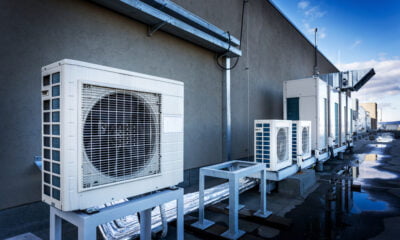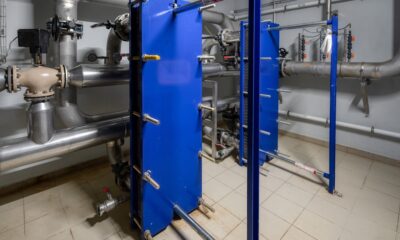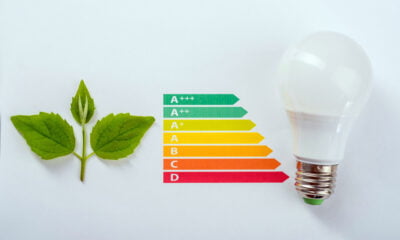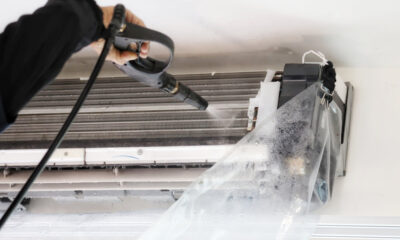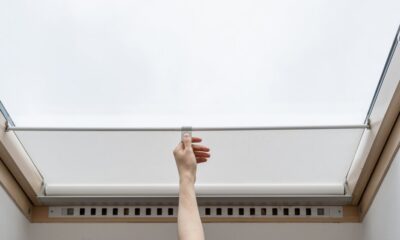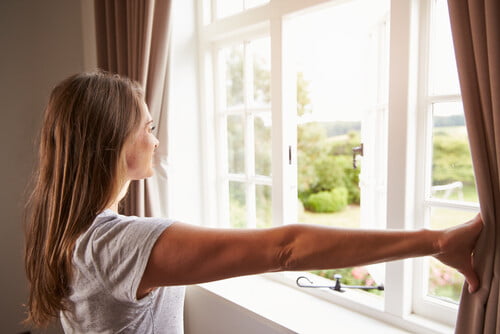

Environment
These Green Alternatives To Air Conditioning May Surprise You
Summer may be long over, but it is never too early to plan their energy conservation strategies for next year! Many people blast their air conditioners at home, which is very expensive, given the cost of electricity involved.
Did you know that the average central air conditioner will use 45,000 watts a day during the summer, if it runs for nine hours a day? This may seem like an unavoidable waste of energy when it is 100 degrees out.
However, a lot of the costs associated with running air conditioning could be reduced if we made a few simple changes to cool the house. Many of these cooling tips were used long before the air conditioning came into our lives. My friend John from The Holistic Millennial wrote about living without any electricity at all, partly because he knows how to stay cool without an air conditioner. He also lived in Latin America, where temperatures are extreme. So you don’t have an excuse for wasting energy with your AC!
Here are some low-tech and energy efficient tips to keep the air fresh. The most effective approaches are the ones that keep heat away from your home in the first place, rather than letting it get in and causing a sharp rise in temperature that will make us want to turn on our air conditioner. However, you can’t keep all heat out, so you are going to need to take some other steps to cool your home after the fact.
Let’s take a look at some of the tips that you can follow to cool your home without blasting the AC. These are the best tips I have come across to keep your home cool during the middle of summer.
1. Use awnings
You probably never thought of using an awning to cool your home. They are such an old tool, that it seems like it could not possibly work. After all, why would air conditioning have been invented if a simple awning could make such a big difference?
The surprising truth is that awnings are very effective at cooling your home. They can reduce up to 65% of the heat if they are placed on a south facing window. The savings are even more significant if you have them on a west facing window. They will trim your heat by 77%.
For some odd reason, many only open their awnings when they want to be on their terrace or balcony. However, extending your awning in summer (especially during the afternoon) will prevent a lot of ambient heat. It will have tremendous benefits for the rest of your home. Using an awning to cool your home will even make your furniture will last longer by keeping moisture from collecting by removing humidity!
You will barely need to use the air conditioner after using an awning. You might not even need it at all!
2. Paint the ceiling
White roofs are becoming more popular, because they are very effective at reflecting UV rays. They were originally intended to be used in cities, because city temperatures were rising sharply, due to climate change. However, new research from Yale shows that they can reduce temperatures in rural communities too. Using a white roof can easily reflect 30% of the sunlight and reduce radiation heating by the same degree.
3. Plant a tree or overhanging plant to cover the surface of your home
If you live in a private house or have a terrace, consider planting a tree. It will provide shade and obviously cool the atmosphere. If you had an evergreen tree in front of your window you would notice heat emissions can be reduced by up to 50%.
As with trees, plants also serve to keep the house cooler. Many companies are already covering buildings with plants such as Hyderabad, because they can reduce heat by up to 50%. They also refresh the inside of your home.
4. Don’t keep your top windows completely open
Why do you have open windows in the middle of summer? Everyone knows that heart rises, so keeping windows on the top floor open only invites more heat into your house. It is better to just have the bottom part raised. Close the top so that only let the air pass underneath.
On the other hand, when you are at home and outside, leave the windows with the shutter down to halfway. Only fresh air will enter.


 Environment9 months ago
Environment9 months agoAre Polymer Banknotes: an Eco-Friendly Trend or a Groundswell?

 Environment11 months ago
Environment11 months agoEco-Friendly Home Improvements: Top 7 Upgrades for 2025

 Features8 months ago
Features8 months agoEco-Friendly Cryptocurrencies: Sustainable Investment Choices

 Features9 months ago
Features9 months agoEco-Friendly Crypto Traders Must Find the Right Exchange


